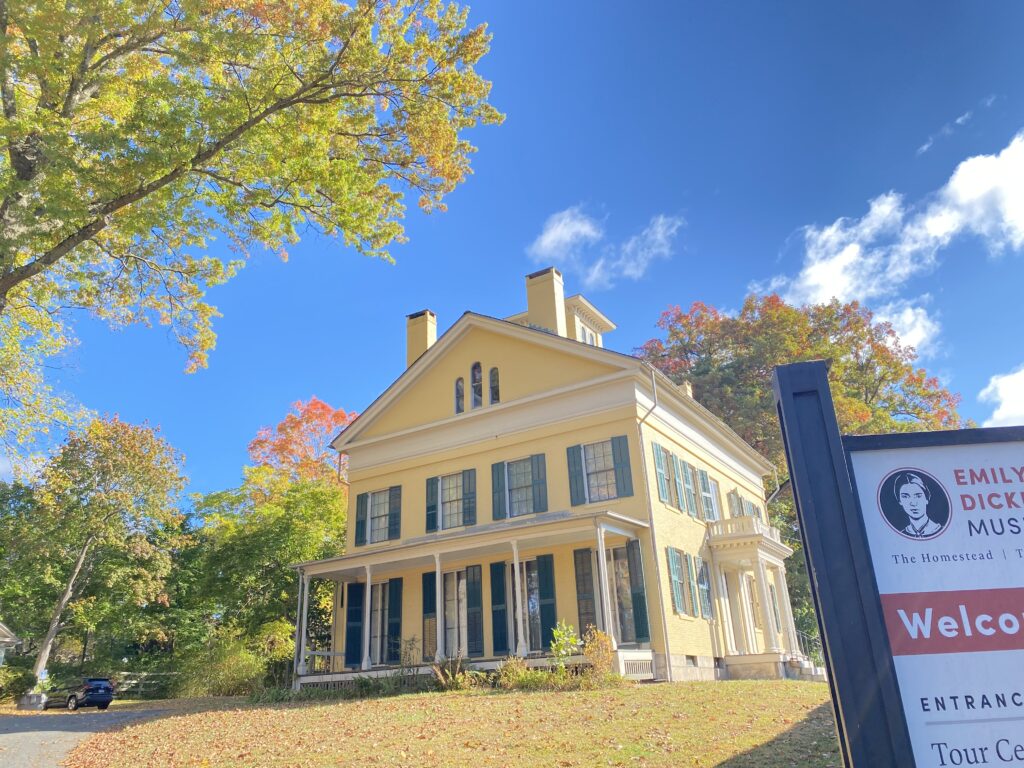
Visitors receive a warm welcome at the Emily Dickinson Museum in Amherst and enjoy guided tours with Dickinson scholars. The museum has photos and exhibits that make it ideal for children and classes to tour. The Homestead, where Emily grew up, the Evergreens next door, where her brother Austin, his wife Susan, and their three children lived, and the carriage house are prominent features of the scenic grounds. Spacious and charming, The Homestead, a National Historic Landmark owned by Amherst College, underwent a restoration in 2022 based on descriptions from Emily’s letters and meticulous historical research about the family. The Evergreens, which had remained in the Dickinson family, eventually merged with The Homestead through the trust of Martha Dickinson Bianchi, Emily Dickinson’s niece, a poet, novelist, and editor of her aunt’s work, and the college.
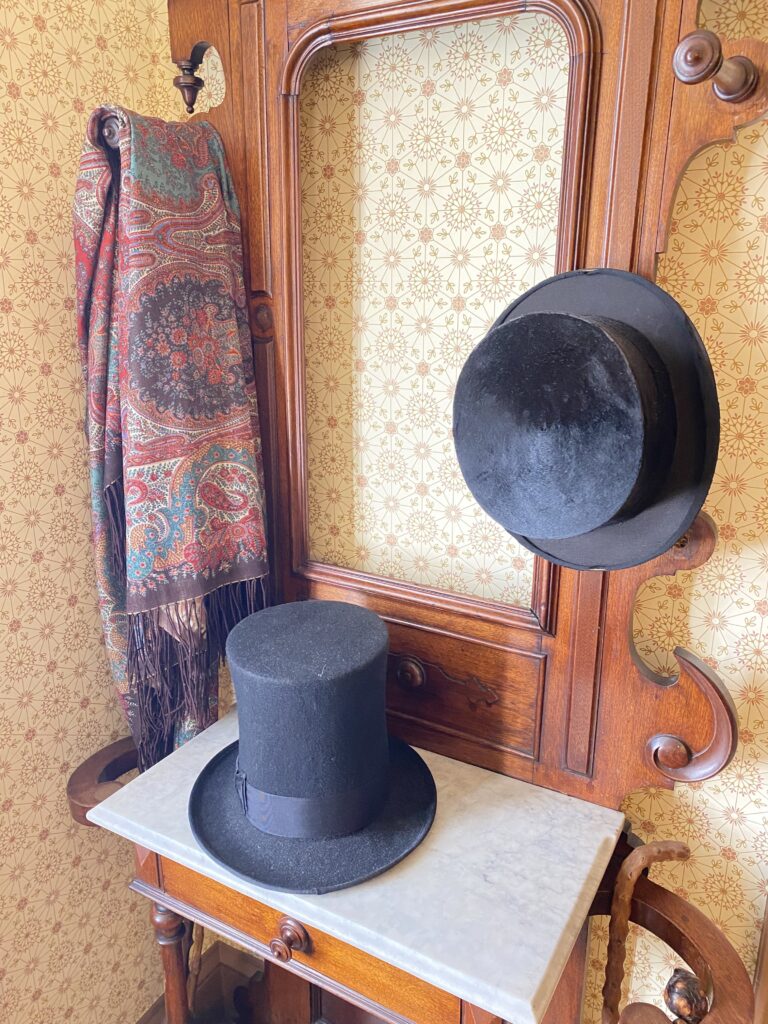
The Homestead sits atop a knoll that has a stunning view of Amherst, which Emily took in each day from her bedroom window. In Emily’s lifetime, she had the run of 14 acres of land, eleven of which extended across the street. On the three acres surrounding The Homestead were an orchard, a peony garden, lilac bushes, a vegetable garden, a grape trellis, a honeysuckle arbor, a barn, and a “summer house covered in roses” (penn.museum). Emily’s avid love of gardening came from her mother, Emily Norcross Dickinson. Her brother Austin’s interest in landscape design was so keen that he engaged Frederick Law Olmsted, known best as the co-creator of Central Park, to improve Amherst Town Commons.
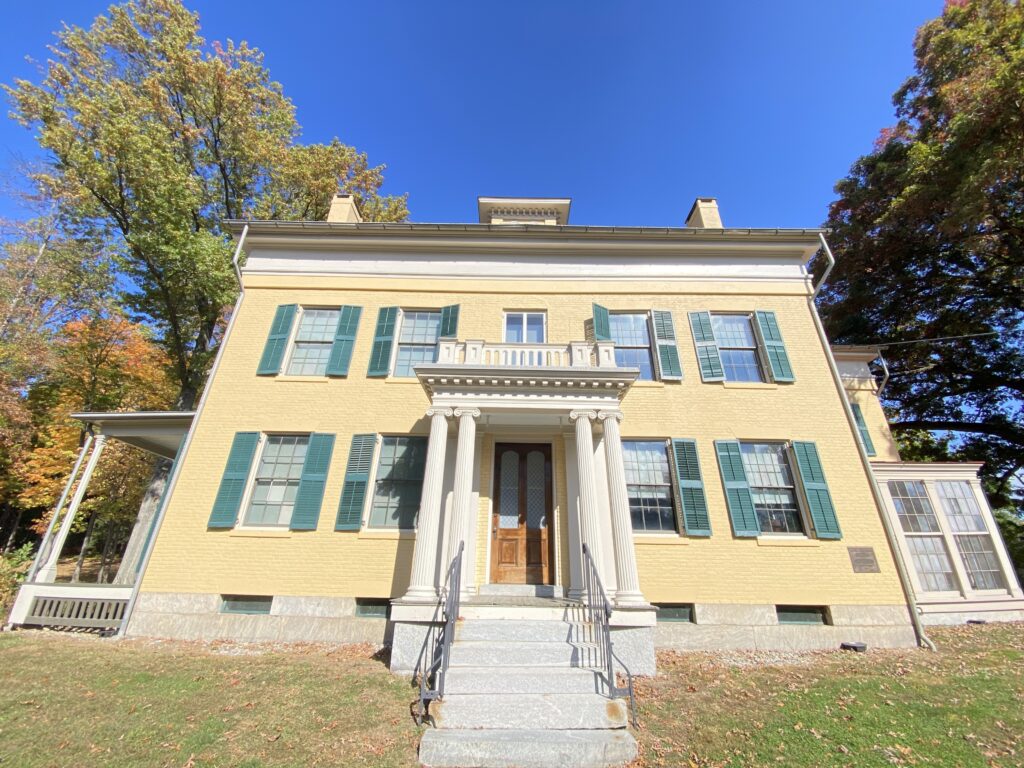
The Federal style Homestead, 1813
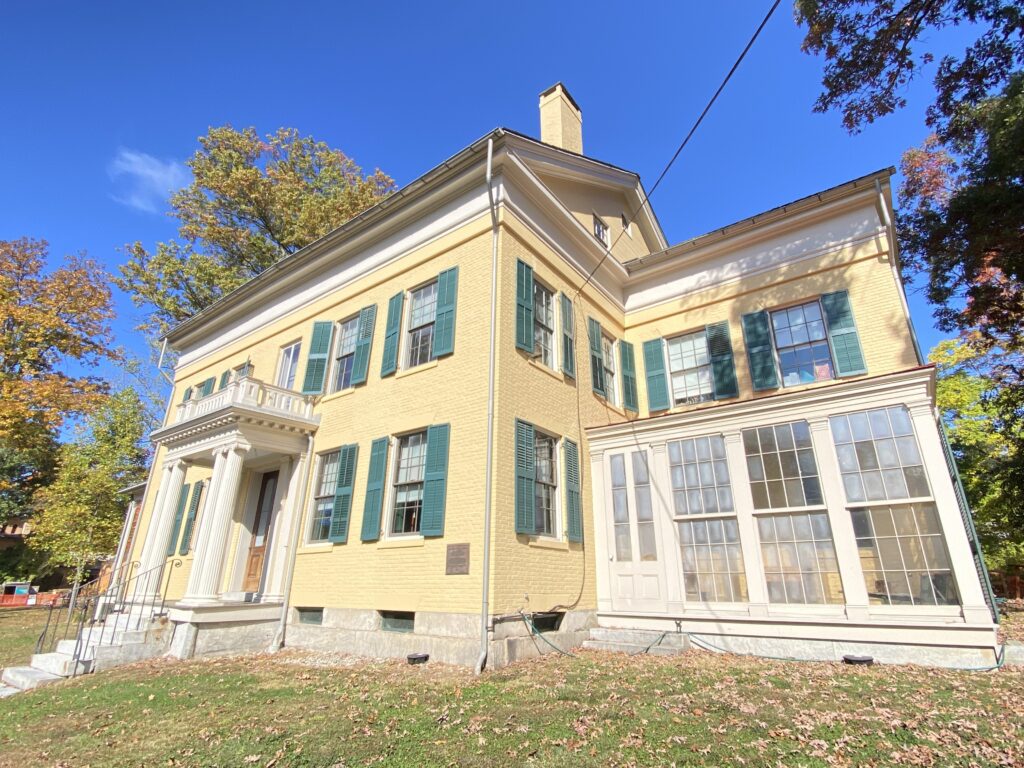
The Homestead, which features a conservatory, reopened in 2022
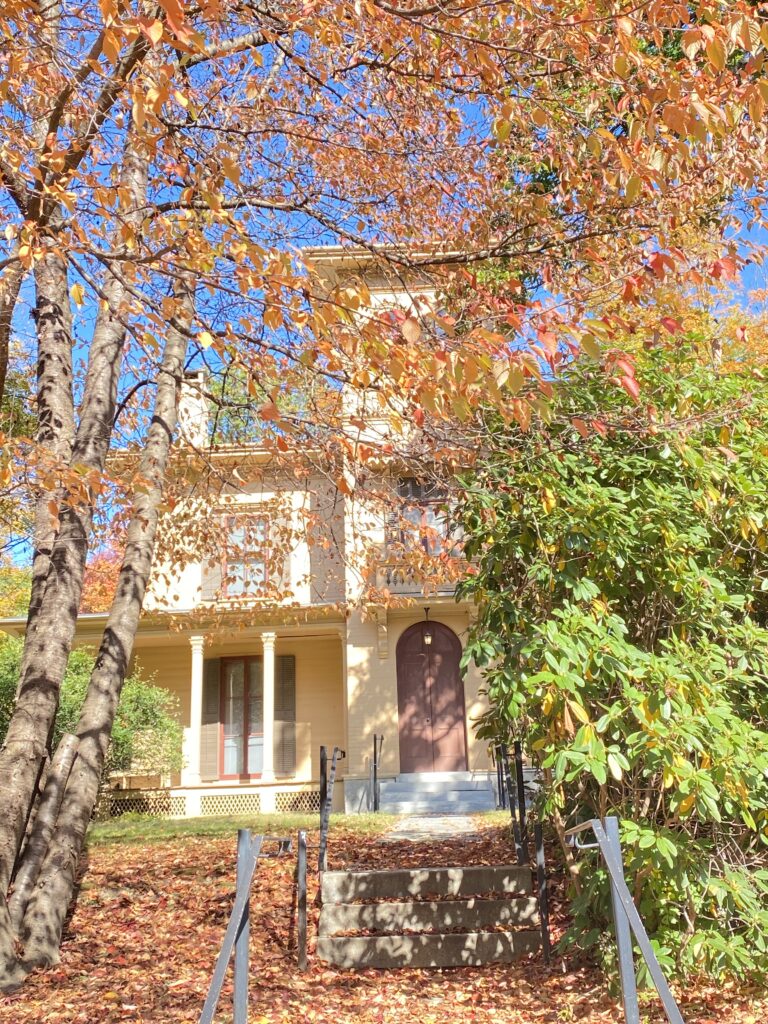
The Evergreens, 1856: “Italianate domestic architecture” (emilydickinsonmuseum.org)
A trip to the museum brings alive the relatable human aspects of a genius and the life that formed her. Emily Dickinson was a devoted and loving daughter, sister, sister-in-law, and aunt who owned a Newfoundland dog named “Carlo,” a gift from her father that she named after a dog in Jane Eyre. Emily loved gardening and was an amateur naturalist. Her mind was so focused on poetry that she wrote on the back of recipes, scraps of paper, and envelopes as she carried out her domestic duties during the day. Envelopes were handy as Emily was a faithful correspondent who wrote an estimated 1,000 letters and often included pressed flowers or bouquets from her garden with her letters: “My friends are my Estate” (archive.emilydickinson.org). She had a mischievous sense of humor conveyed through the wit of those letters and poems. Lest her observations seem too sharp, sweet blooming roses on her bedroom wallpaper are familiar to many a girl and woman. Though not a churchgoer in later years, Emily was a person of faith, perhaps influenced by the Transcendentalism of her time, reflected in her poems:
The Brain – is wider than the Sky –
For – put them side by side –
The one the other will contain
With ease – and you – beside –
The Brain is deeper than the sea –
For – hold them – Blue to Blue –
The one the other will absorb –
As sponges – Buckets – do –
The Brain is just the weight of God –
For – Heft them – Pound for Pound –
And they will differ – if they do-
As Syllable from Sound –
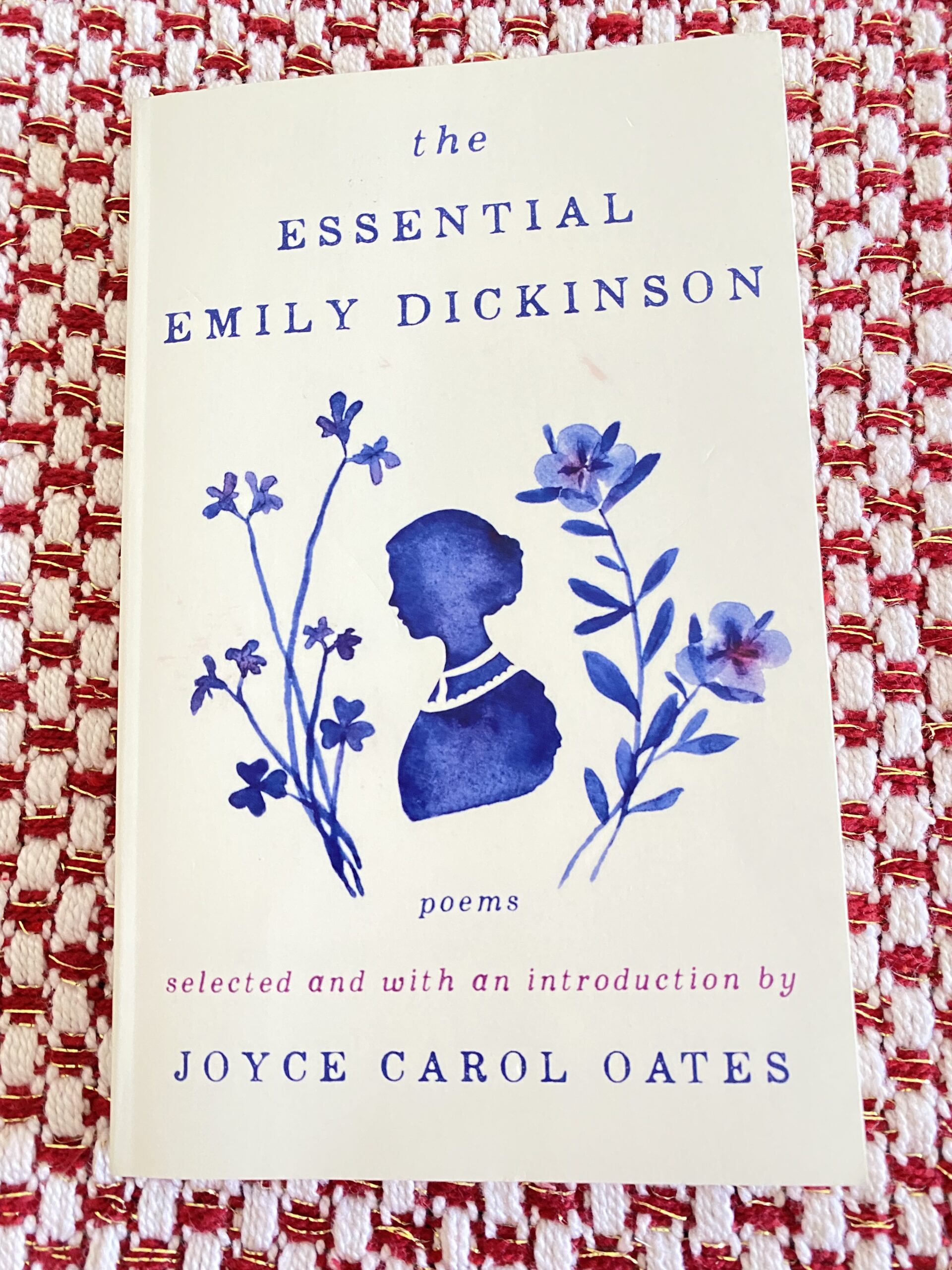
As Joyce Carol Oates, the lauded writer, the Roger S. Berlind ’52 Professor of the Humanities at Princeton University, and a delightful public speaker notes in her introduction to The Essential Emily Dickinson, Emily gave voice to readers’ interior lives, the hopes, thoughts, and doubts most everyone explores. As Ms. Oates conveys, Emily was a “great poet of inwardness, of that indefinable region of the soul in which we are, in a sense, all one,” which is one reason her poems resonate worldwide. With pensive reflection and few references to news or events, Emily’s poems stand outside of time. Ms. Oates describes Emily’s lyric poems as “revolutionary,” departing from the traditionally structured poems of her time, sometimes even inverting sentence structure in a playful adaptation of the rules of Latin grammar.
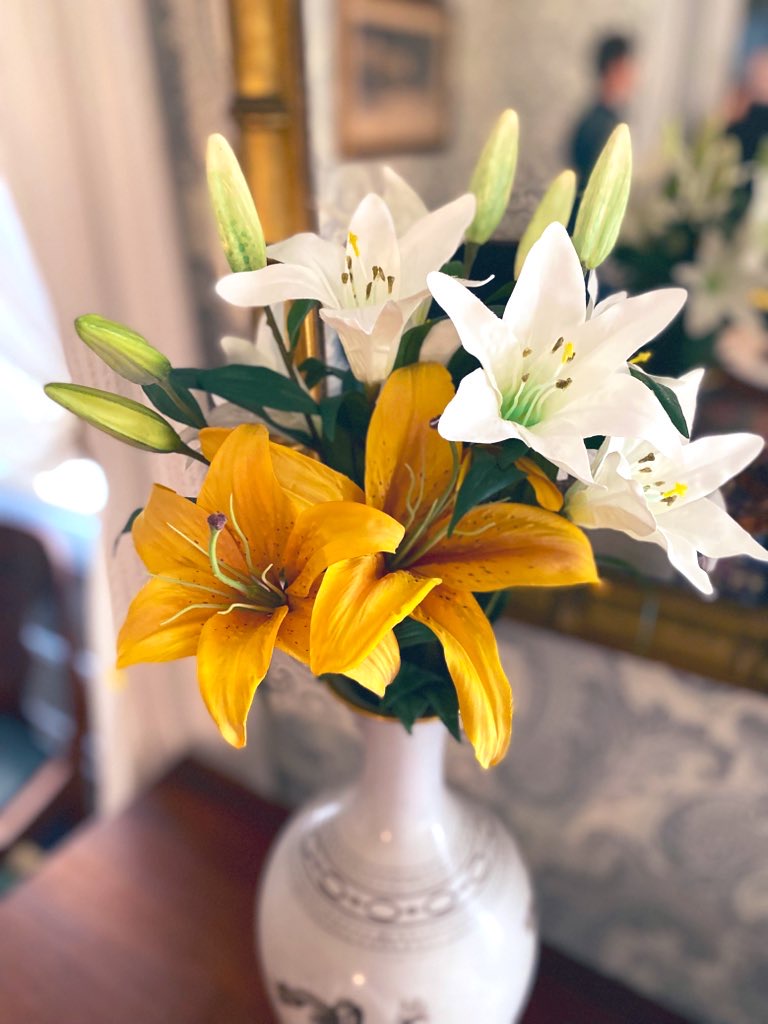
Ms. Dickinson’s poems often stand outside of a setting as well, “scenelessness” (Monica Cooper, classicalpoets.org):
Summer laid her simple Hat
On its boundless Shelf –
Unobserved – a Ribbon slipts,
Snatch it for yourself.
Summer laid her supple Glove
In its sylvan Drawer –
Wheresoe-er, or was she –
The demand of Awe?
Biographical overview
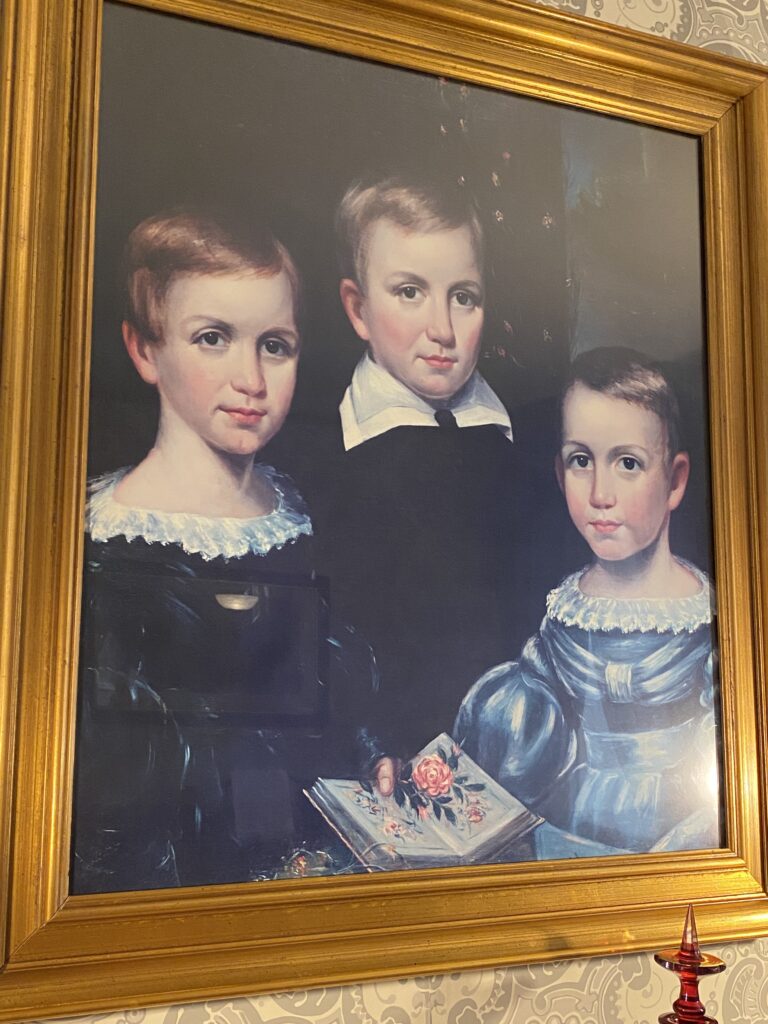
Emily, her brother Austin, and sister Lavinia
Emily Dickinson, 1830-1886, was a well-educated woman and used this in her poetry. Born at The Dickinson Homestead, she was the middle sibling between older brother Austin and younger sister Lavinia or “Vinnie” in a closely knit family. Her grandfather, Samuel Fowler Dickinson, built the stately home, the first brick one in Amherst. He was a prominent attorney and a founder of Amherst College. Emily lived at The Homestead for most of her 55 years with fifteen spent at another house in town after Samuel had overextended himself financially to support the fledgling Amherst College. Some historians view his son Edward, Emily’s father, as being frugal and stern, which perhaps he was. He grew up, however, as the eldest in a family of nine, saw his family’s finances fold, and rebuilt his immediate family’s fortune enough so that he could repurchase the lost Dickinson Homestead. Edward had his daughters formally educated in an era when many girls received only tutoring at home. He married Emily Norcross, a well-educated woman, though “shy and retiring”.
As a girl, Emily studied for seven years at Amherst Academy, where her love of nature flourished with studies in botany. She created a herbarium, a collection of pressed plant specimens, with more than 400 types of plants. Visitors will see replicas of some pages on the tour. At the academy, Emily also studied composition, Latin, geology, and astronomy and had access to lectures at Amherst College.
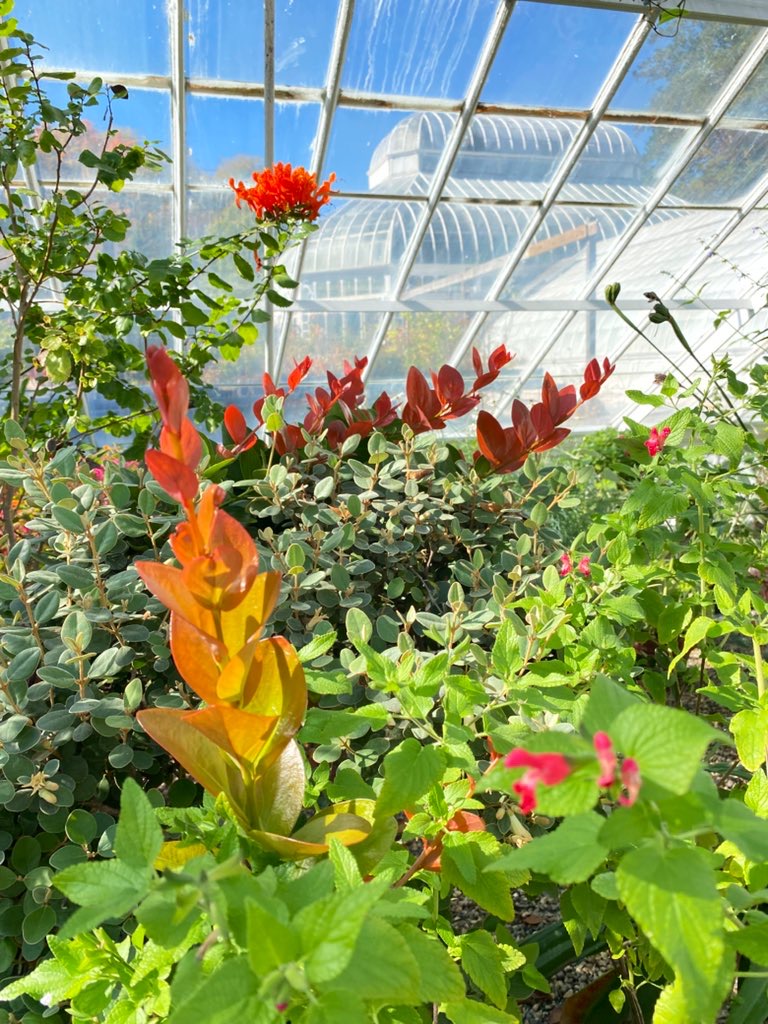
Interior of the Talcott Greenhouse, Mount Holyoke Botanic Garden
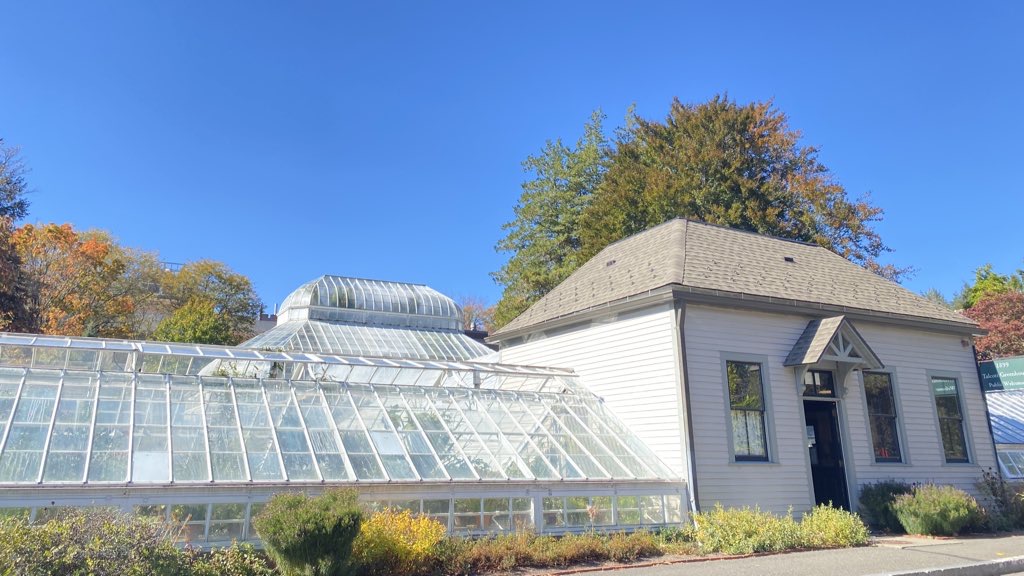
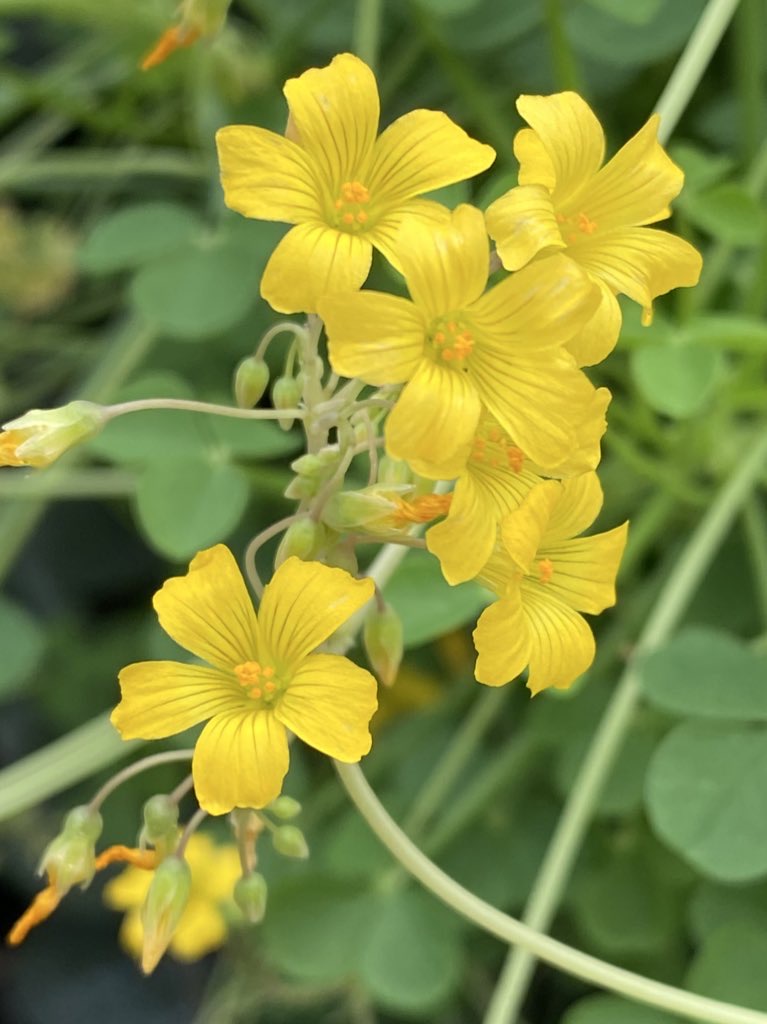
Slender yellow woodsorrel
A 17-year-old Emily tested and placed in the middle of three levels at Mt. Holyoke Female Seminary in nearby South Hadley and might have graduated in two years. She found it confining, however, perhaps due to its strict Calvinism at the time and left after one year. Emily favored the sciences over religious studies, which did not align with the revival of Calvinism throughout Massachusetts (The Guardian):
“Faith” is a fine invention
When Gentlemen can see –
But Microscopes are prudent
In an Emergency.
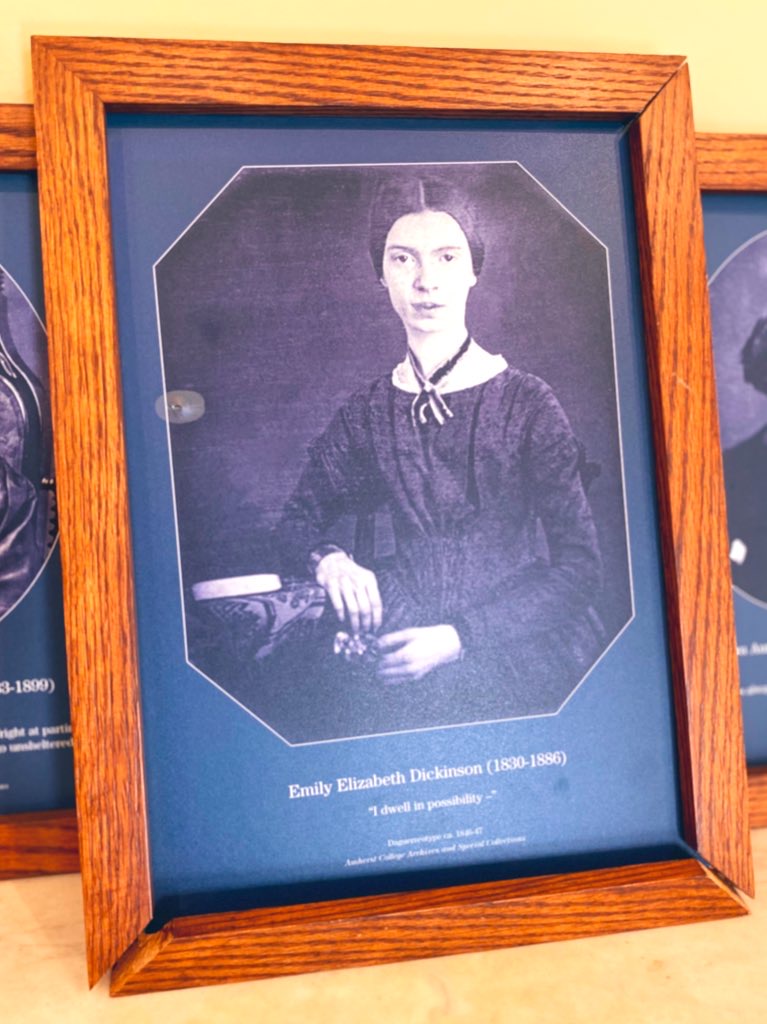
Emily, 16, whose hair was reportedly red in childhood, and later auburn; her eyes were a dark hazel
One fun tidbit from the tour is that Emily’s father gave her mother a book on housekeeping as a wedding gift. Mrs. Dickinson took this to heart and, though the family could afford servants, she and the girls did all the housework for 25 years. Emily’s work flourished upon the engagement of a housekeeper.
The petite genius who often dressed in white wrote at a tiny desk in her bedroom and kept her poems in packets, “fascicles,” sometimes sewn together. Enjoy hearing details about her bedroom’s restoration on the museum’s YouTube channel.
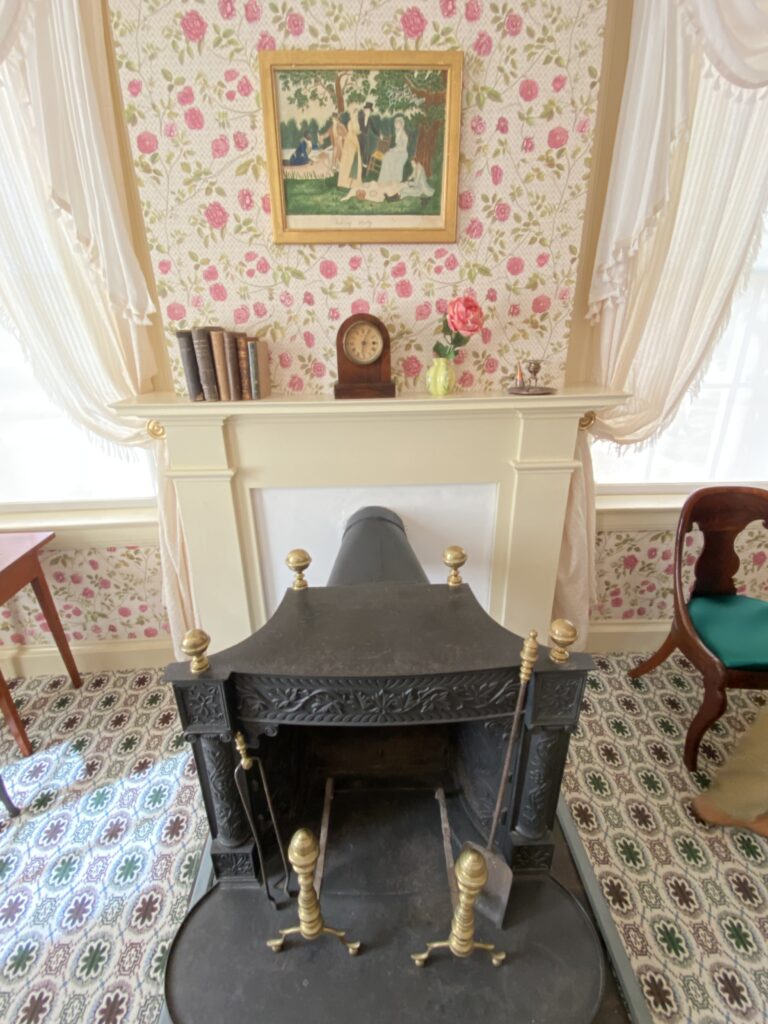
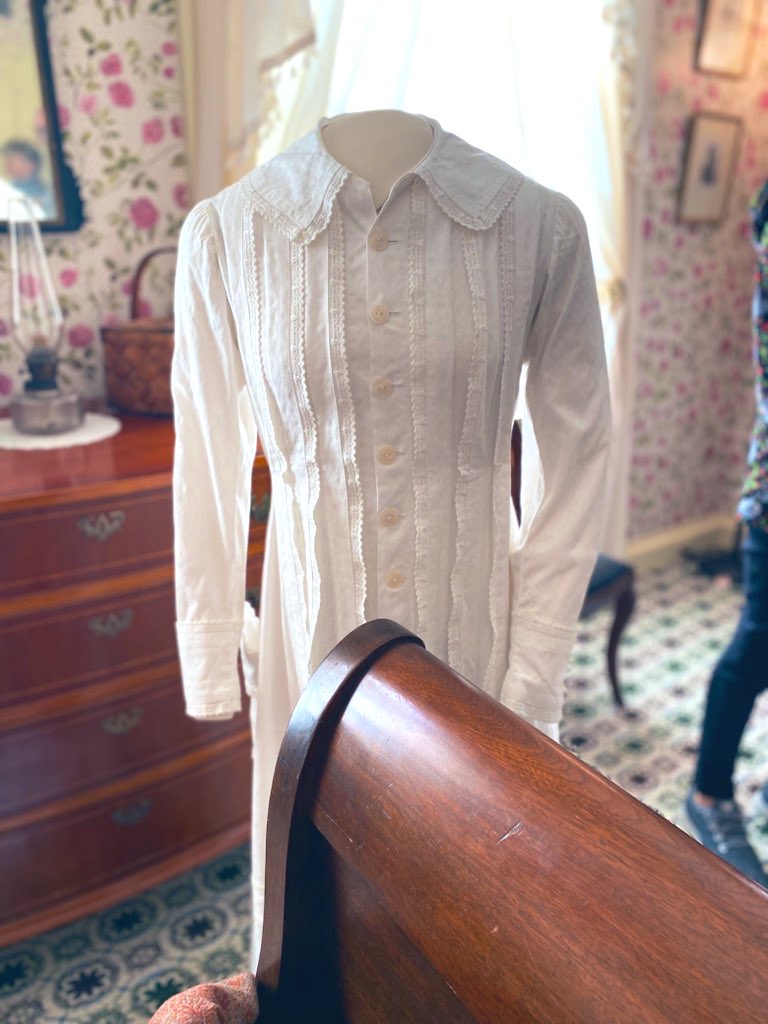
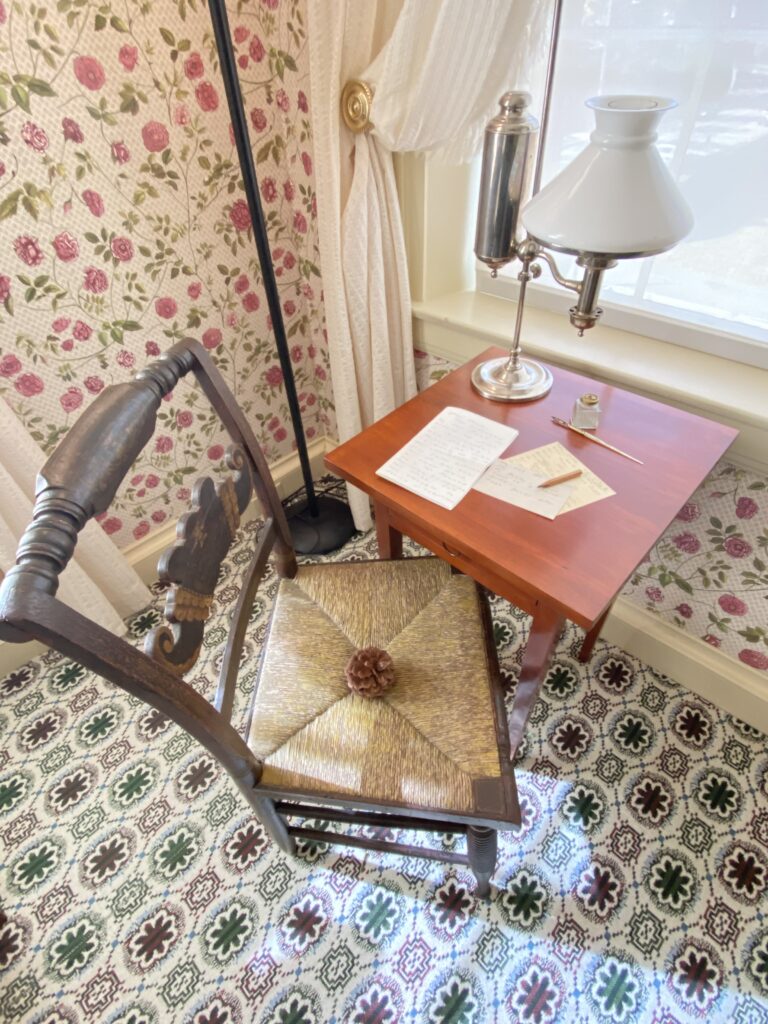
Around 1860, when Emily was 30, she began withdrawing from public life. Some speculate that her reclusiveness was due to an eye condition. Her work became more prolific, so it is possible that she did not want interruptions. Regardless of the reason, she continued to read poetry, novels of her time, the Bible, The Springfield Republican, a highly regarded newspaper, and The Atlantic Monthly. With her family, Emily traveled to see family in Massachusetts and went on trips to Philadelphia and Washington, DC.
The circle of Emily’s immediate family grew with Austin’s marriage to Emily’s friend from Amherst Academy, Susan Huntington Gilbert, the greatest recipient of Emily’s poems and a helpful critic. Some scholars believe that Emily’s feelings towards Susan extended beyond friendship. Emily was a doting aunt to Susan and Austin’s children Edward (“Ned”), Martha (“Mattie”), and Thomas Gilbert (“Gib”). One of her pastimes as a fun aunt was lowering gingerbread on the sly from her bedroom window to her nephews, niece, and their friends.
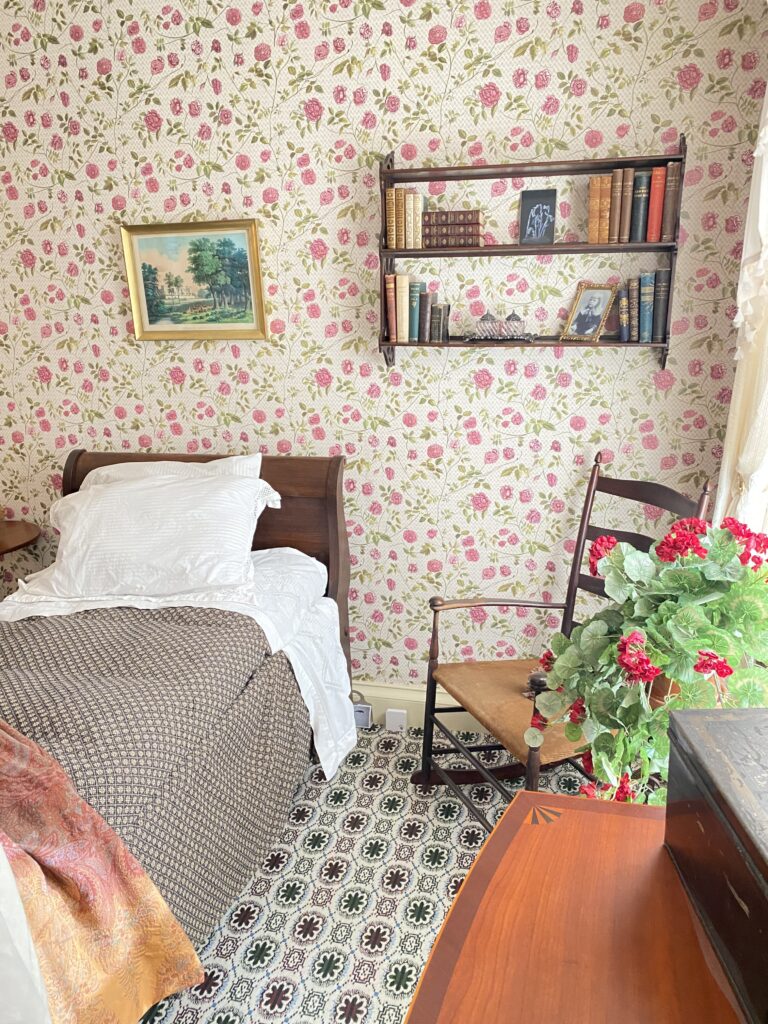
In middle age, she and her sister Lavinia, who kept the house running, cared for their mother, who was partially paralyzed after a stroke, with the help of their maid Margaret Maher. Mrs. Dickinson resided in a room adjoining Emily’s. (Their father had died suddenly while away from home when Emily was 43 which left the family grief-stricken twice over, not having had the opportunity to say goodbye.) Though Emily and her mother were not close, Emily reportedly never complained about caring for her for seven years and spoke of her with great affection.
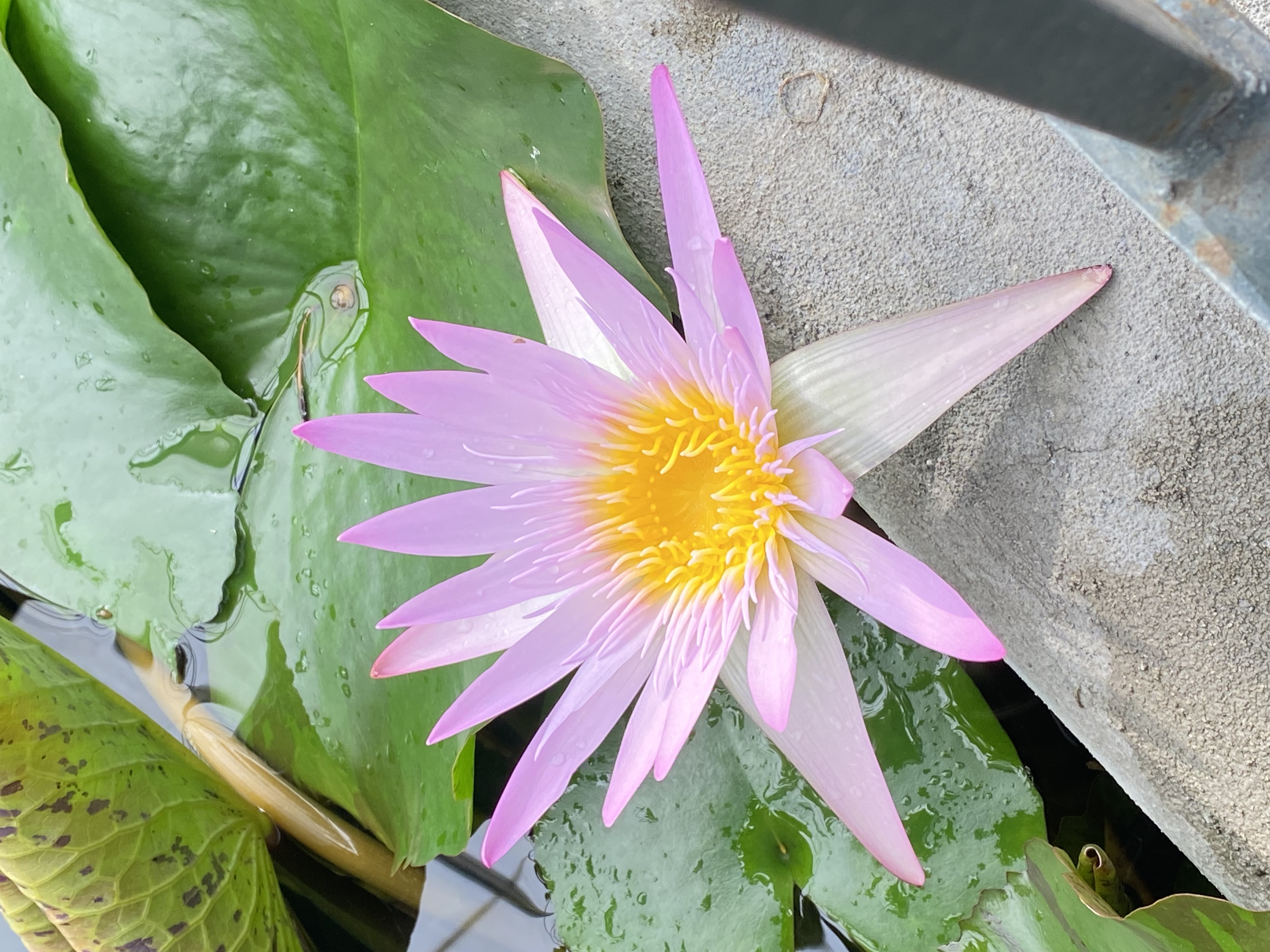
Egyptian lotus at the Talcott Greenhouse
After the death of Emily’s beloved nephew Gib, 8, from typhoid fever and the loss of a friend and one-time suitor Judge Otis Philips Lord some months later, Emily’s health began to decline. She died a few years later at 55 from Bright’s disease, which was a catch-all for unknown causes.
Publication
Of the nearly 1,800 poems Emily wrote, only ten were published in Emily’s lifetime, anonymously and likely without her approval. The lack of publication may be a combination of factors: Emily’s reserve, her father’s conservative views on women and publication, and discouragement from a friend and correspondent, Thomas Wentworth Higginson, an editor of The Atlantic Monthly. Emily had read his letter to young writers in the magazine and submitted four poems to him. Thomas did not recognize her genius and discouraged her, but they continued to correspond and eventually met.
After Emily’s death, Lavinia found hundreds of her sister’s untitled, numbered poems in a bedroom drawer. More kept turning up on scraps and the backs of various household papers which revealed Emily’s discipline and dedication to her writing. Lavinia sought to have her sister’s poems published, but grief and a fractious division within the family resulted in a heavily edited publication by an Amherst College professor’s wife, Mary Loomis Todd, who had insinuated herself into the Dickinson family, and Thomas Wentworth Higginson. As co-editors, the two “corrected” Emily’s poems to reflect the poetic style of the Victorian era. The first time Emily’s poems appeared in print as she wrote them was in a 1955 edition from Harvard University Press edited by R.W. Franklin, the Director of the Beinecke Rare Book & Manuscript Library at Yale University.
For a list of noteworthy publications of Emily’s poems, kindly visit the museum’s page.
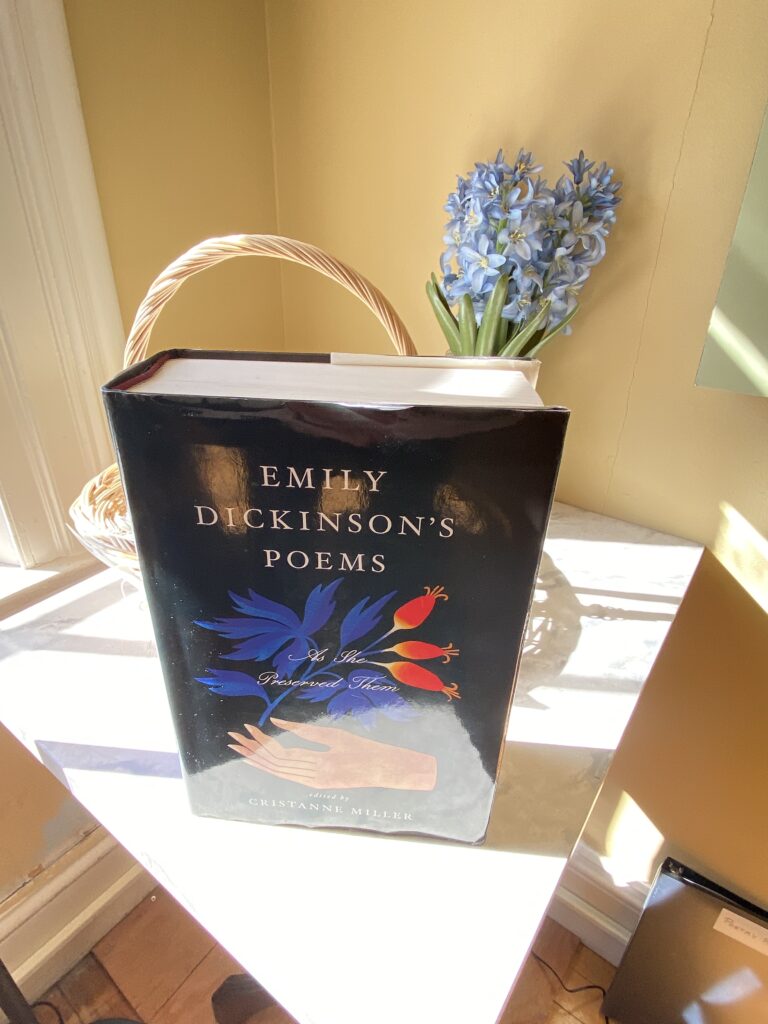
A 2016 definitive edition of Emily poems by Cristanne Miller, SUNY Distinguished Professor and Edward H. Butler Professor of Literature, University of Buffalo, an Emily Dickinson scholar who also edited and wrote several other books on the poet
The enigmatic Emily Dickinson loved riddles, and it is a joy to explore the meaning of her intricate poems. One of the museum’s exhibits demonstrates how Ms. Dickinson’s poems often had alternate words in the margins. One wonders if, rather than being “unfinished,” in the mind of a gifted gardener, Emily’s poems were organic: ever-growing and ever-changing. Though her thoughts about publishing seemed ambivalent, publishing a poem defines it at least for the readers. Given the private nature of Emily’s writing, her sophisticated use of sound is another impressive aspect of her poetry.
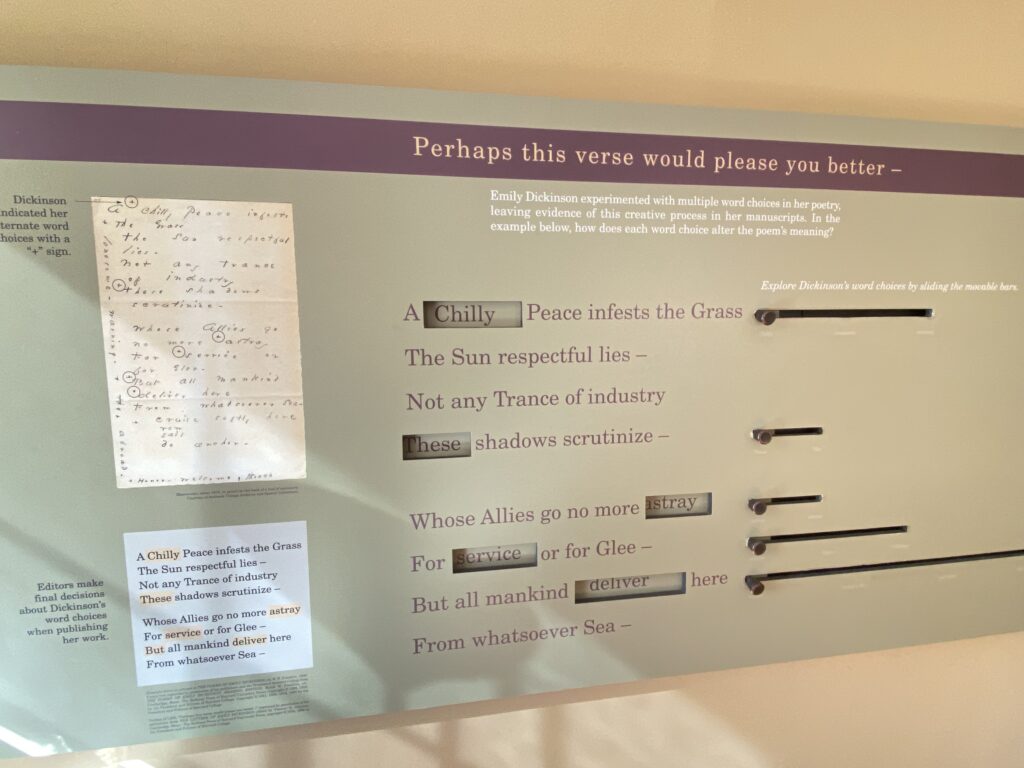
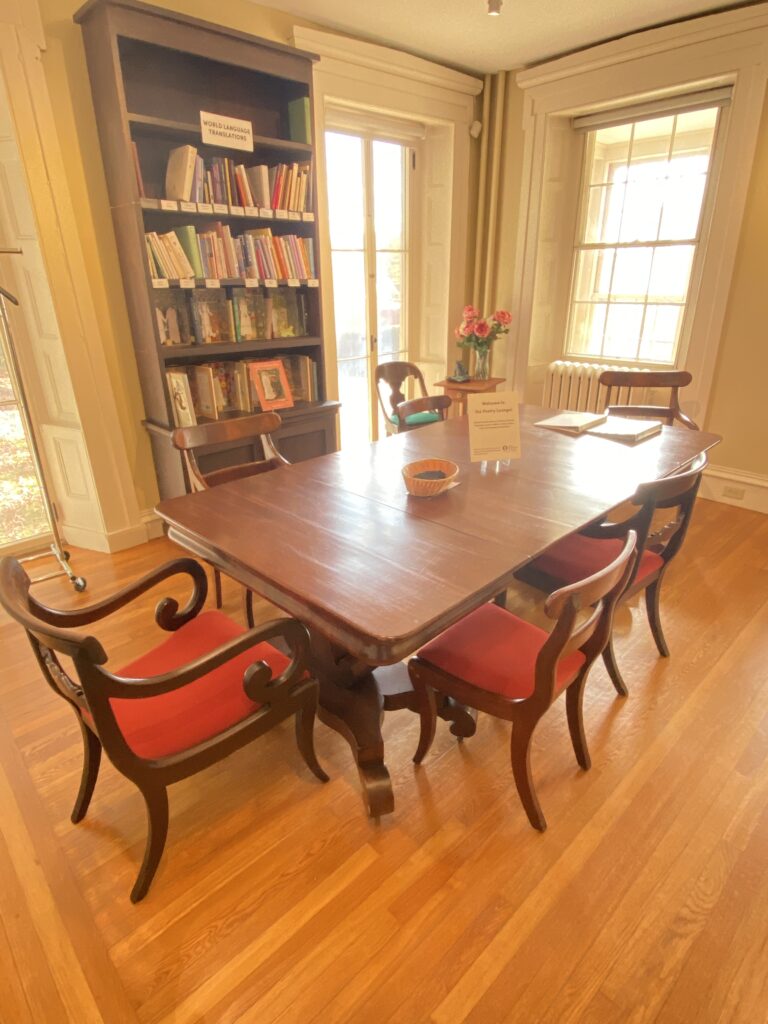
Perhaps there is an irony in writing a travel piece about someone known as a recluse, but as our guide, Brenna shared, that term may be misleading for someone who had the run of a large working farm and gardens. Emily Dickinson lived a full life on her terms and was sociable within her world. Many of her poems concern death, which was all around her. She lost cousins at an early age, lived through the Civil War, and saw people pass away from fevers or illnesses easily remedied today. (The average lifespan in 1860 was 39.4 years.) Emily’s most prolific writing period was 1855-1865. Though she never directly references the Civil War, it impacts her work. At the very least, the act of creativity in writing and gardening, is life-affirming. Though there were hardships for the family, as there were for many in those years, the cheer of The Homestead belies this.
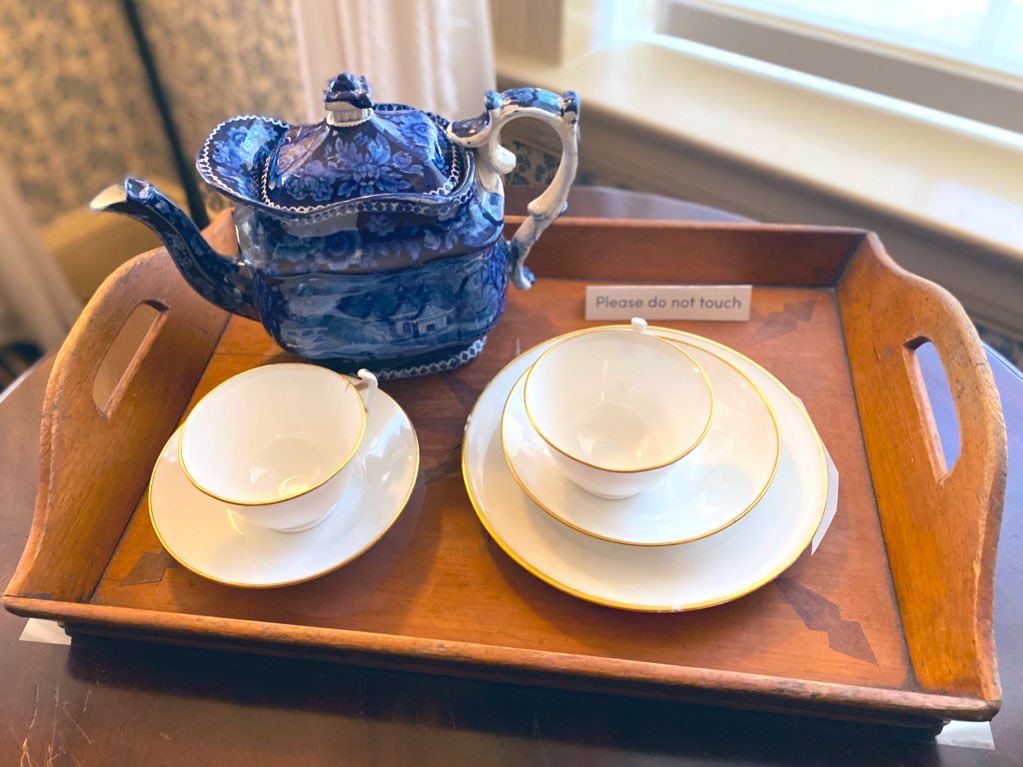
Emily once wrote to a friend, “If we love flowers, are we not born again every day?” A curator for the New York Botanic Garden’s “Emily Dickinson’s Garden: The Poetry of Flowers” (2010) shared this in a PBS interview on YouTube and the wonderful realization of Emily’s that pressed flowers, like poems about them, live on. Enjoy a virtual tour of Emily’s garden from the NYBG exhibition.
Though Emily Dickinson could explore the depths of the soul, she shared that soul’s resilience:
“Hope” is the thing with feathers –
That perches in the soul –
And sings the tune without the words –
And never stops – at all –
And sweetest – in the Gale – is heard –
And sore must be the storm –
That could abash the little Bird
That kept so many warm –
I’ve heard it in the chillest land –
And on the strangest Sea –
Yet – never – in Extremity,
It asked a crumb – of me.
Emily composed a poem for “Thanksgiving Day,” which is shared somewhat from the viewpoint of an outsider but conveys that our thanks are never sufficient:
…Not a mention whose small Pebble
Wrinkled any Sea,
Unto such, were such Assembly,
‘Twere “Thanksgiving day”
Children often initially read or hear “A Bird Came Down the Wall,” but the first that resonated with me was one I read as a teen:
The Souls Selects her own Society –
Then – shuts the Door –
To her divine Majority –
Present no more –
Unmoved – she notes the Chariots –
pausing –
At her low Gate –
Unmoved – an Emperor kneeling
Upon her Mat –
I’ve known her – from ample nation –
Choose One –
Then – close the Valves of her attention –
Like Stone.
Gardening
Emily’s renown was as a gardener, and gardening offered her a world of metaphor for her poetry. A striking feature of the street view of Emily’s home is the sparkling glass of the conservatory in which she grew ferns and flowers year-round. In a greenhouse that her father had built for his daughters, Emily grew gardenias, carnations, jasmine, fuchsia, and heliotropes. She often used those flowers like violets, one of her favorites, in baking, another pastime.
Of Emily’s gardens, her niece Martha recalled “a mass of meandering blooms” composed of “daffodils, hyacinths, chrysanthemums, marigolds, peonies, bleeding heart and lilies…and Greville roses” (nytimes.com).
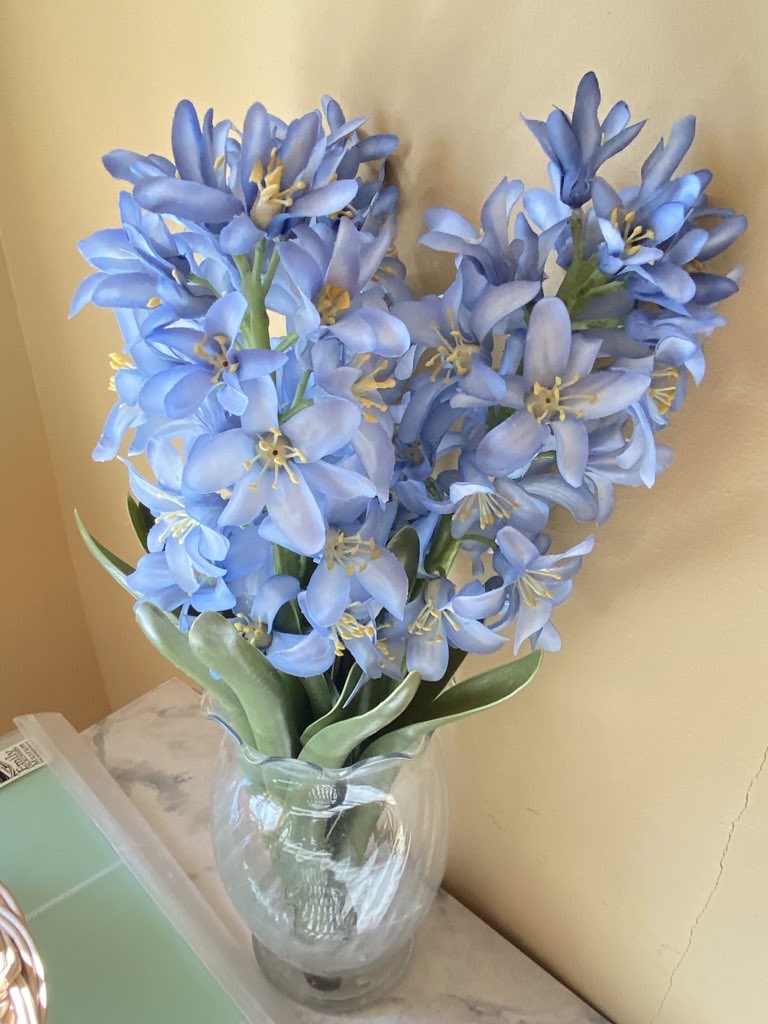
As an insight into Emily Dickinson’s gardening life, readers may enjoy the gloriously illustrated and detailed Emily Dickinson’s Gardening Life by Marta McCall, Chatham, NJ, who teaches at the New York Botanic Garden and was the 2018 gardener in residence at the Emily Dickinson Museum. Bought this with good intentions as a reference for this post, but it will be a cozy winter read in anticipation of spring.
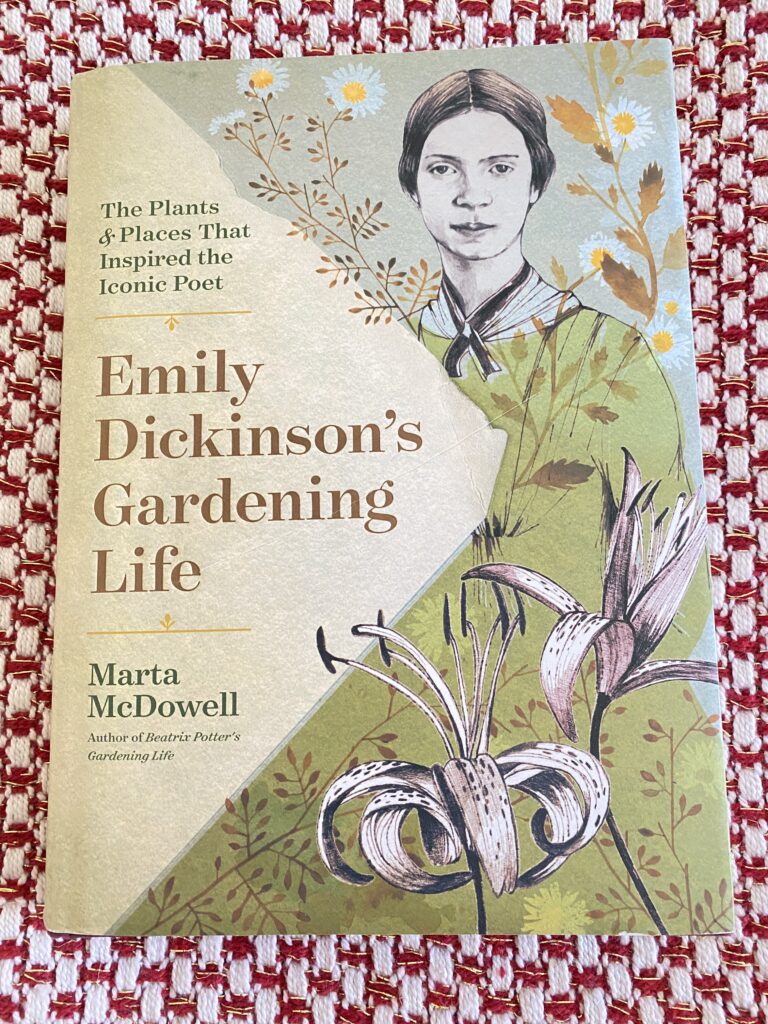
Baking
Emily won second place in a baking competition with her “Indian loaf and rye bread” (tastingtable.com) and enjoyed baking for her family, friends, and neighbors. The home-baked gifts sometimes included edible flowers from her garden. The Homestead had three types of grapes, and the family made jams and wine. Emily’s popular gingerbread recipe is on innumerable blogs as well as the museum’s website. As a fun addition to the Thanksgiving meal, I added this:
Emily Dickinson’s Recipe for Gingerbread:
1 quart flour
1/2 cup butter
1/2 cup cream
1 tablespoon ginger
1 teaspoon soda
1 teaspoon salt
Make up with molasses (a little more than a cup is about right)
Cream the butter and mix with lightly whipped cream. Sift dry ingredients together and combine with the other ingredients. The dough is stiff and needs to be pressed into whatever pan you choose. A round or small square pan is suitable. Bake at 350 degrees for 20–25 minutes. (The recipe is via the nybg.com blog with the addition of a simple icing with confectioner’s sugar and edible violets. Enjoy making more of Emily’s recipes via novelist Emily Temple on Literary Hub.)
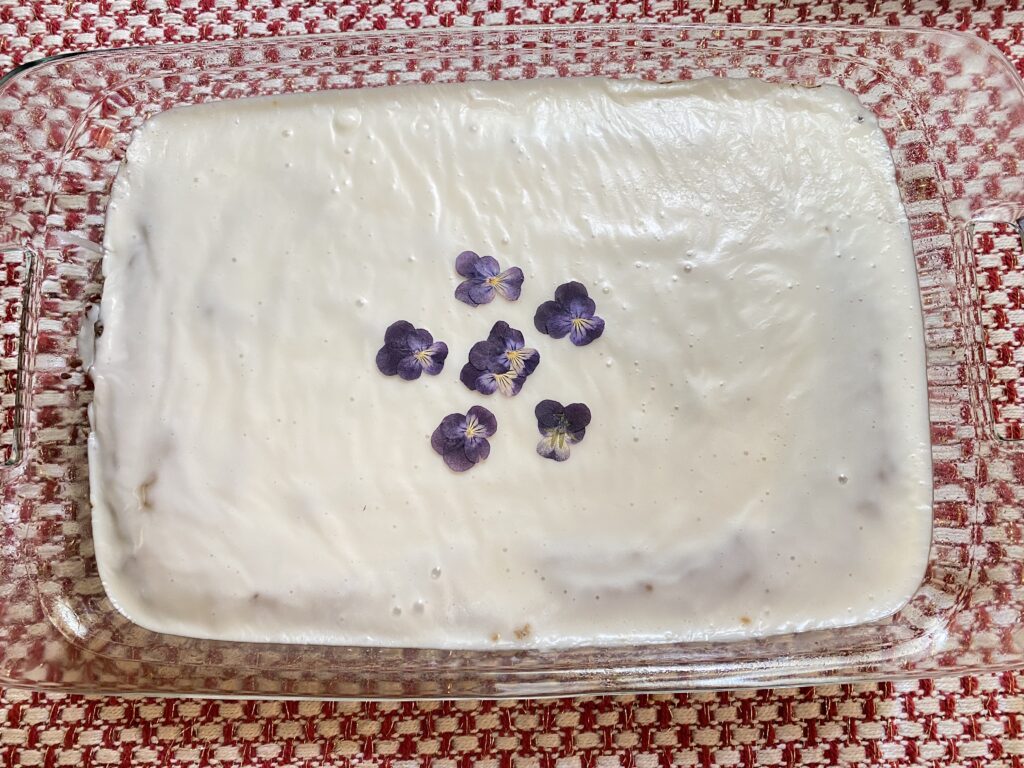
Since Emily’s grandfather co-founded Amherst College, this will include a brief pitch made in gratitude for the Five College (Amherst College, Smith College, Mt. Holyoke College, the University of Massachusetts, and Hampshire College) experience. A free bus takes students around to each school. When this started about the time of my senior year at Smith College, it led to the discovery of brilliant foreign films with friends at the Amherst Cinema, views of the golden autumn and pumpkin-laden fields of South Hadley on visits to a friend at Mt. Holyoke, and later her graduation at the hillside amphitheater, the music of Rimsky-Korsakov played by the Moscow Philharmonic at UMass concert hall (now the Frederick C. Tillis Performing Arts Center, part of the Randolph W. Bromery Center for the Arts), and “Plan 9 from Outer Space” and other horror classics at a fun Halloween festival at Hampshire College. All these experiences of the arts were as rich as any in New York City and made affordable to students in the days before ride shares allowed for the ease of off-campus trips and travel to Boston.
A later spontaneous trip to Amherst, which was to have included the Emily Dickinson Museum, began with Amherst College’s Beneski Museum of Natural History with its incredible dinosaur fossils. As it turned out, planning to visit the popular museum is advised. The museum is open March-December, Wednesday-Sunday 10-5 with last admission is at 4 p.m.. A key suggestion is to purchase tickets online before the trip, an invaluable tip from tripadvisor.com reviews. The Evergreens, newly restored, and its former carriage house, now under construction as a welcome center, should reopen in the spring, which is all the more reason for another visit as well as to enjoy the gardens. Enjoy updates by subscribing to the newsletter and following the museum’s social media.
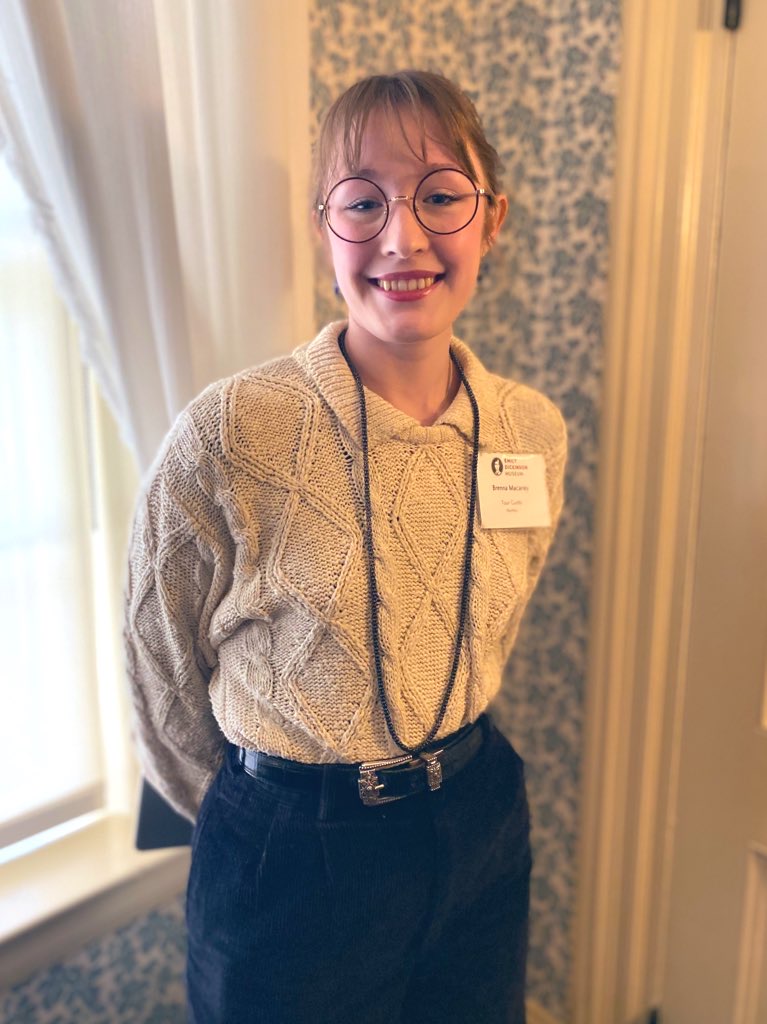
Sincere thanks to the charming and scholarly Brenna who was a wonderful guide. Anything on point is a credit to Brenna, any detours, hopefully, few, are mine.
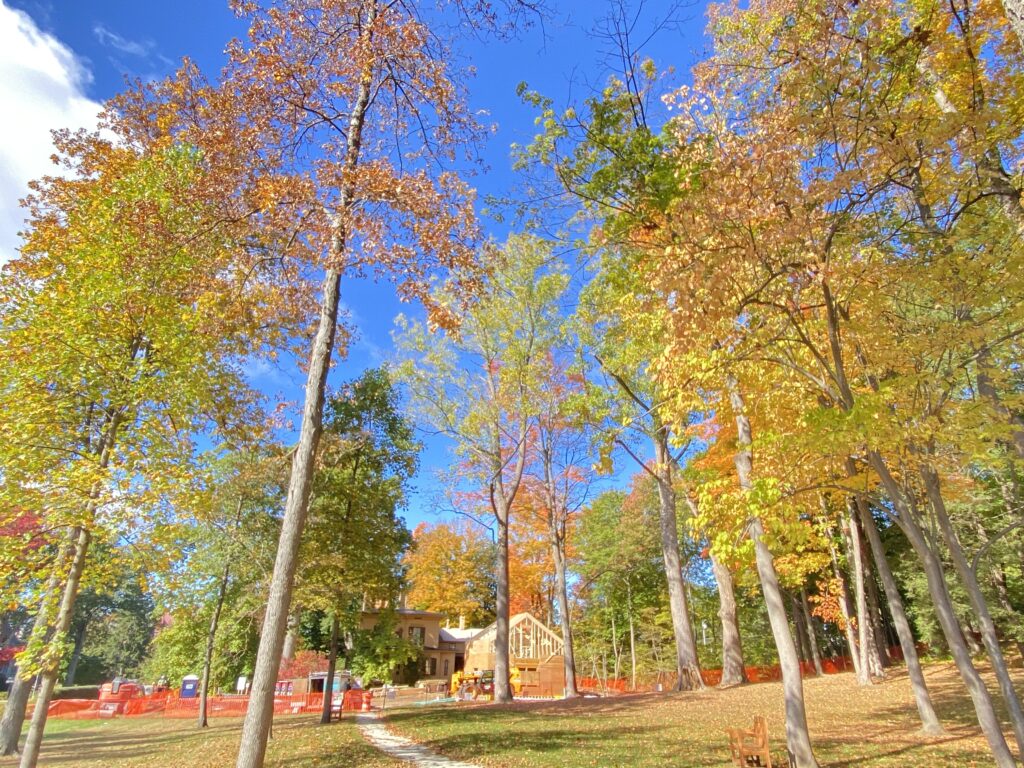
A view of the beautiful trees on the museum grounds and the carriage house construction
Donations and items from the shop support the museum: Emily Dickinson Museum Shop. Join the free online party on December 10th for Emily Dickinson’s birthday (in-person is sold out!) and a virtual tour. As Frommer’s Travel Guide notes, Dickinson enthusiasts may also enjoy a tour of the Houghton Dickinson Room at Harvard University’s Houghton Dickinson Library, which features Ms. Dickinson’s writing desk, books from the family library, and other original items of the home.
Happy Thanksgiving!
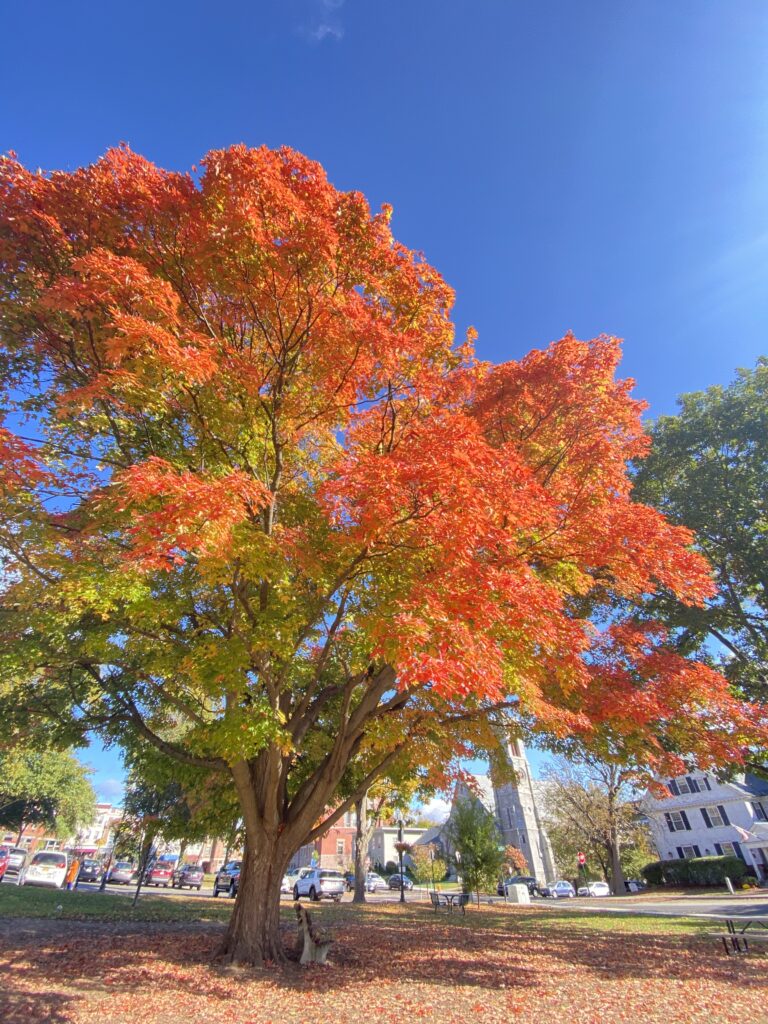
Beautiful tree on the Amherst Town Common, such nice people there
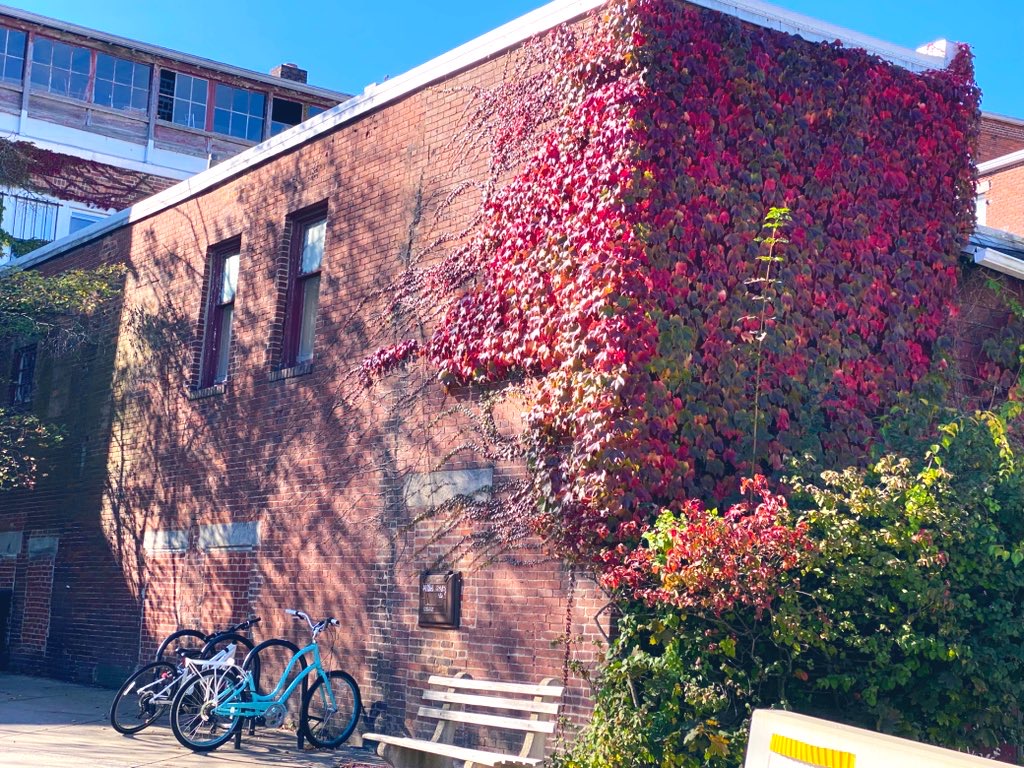
(Additional sources: emilydickinsonmuseum.org, amherst.edu, mtholyoke.edu, poetryfoundation.org, poetry.org, drupal.yearbooks.yale.edu, poemanalysis.com, Britannica.com, edsitement.neh.gov,frommers.com, dbu.edu, penn.museum, journeys.dartmouth.edu, theatlantic.com, nytimes.com, buffalo.edu, princeton.edu, owlcation.com, tastingtable.com, quotefancy.com, lindaborromeo.com, frankhudson.org, publishersweekly.com, statistics.com, Wiki)
“The Emily Dickinson Museum” All Rights Reserved ©2024 Kathleen Helen Levey
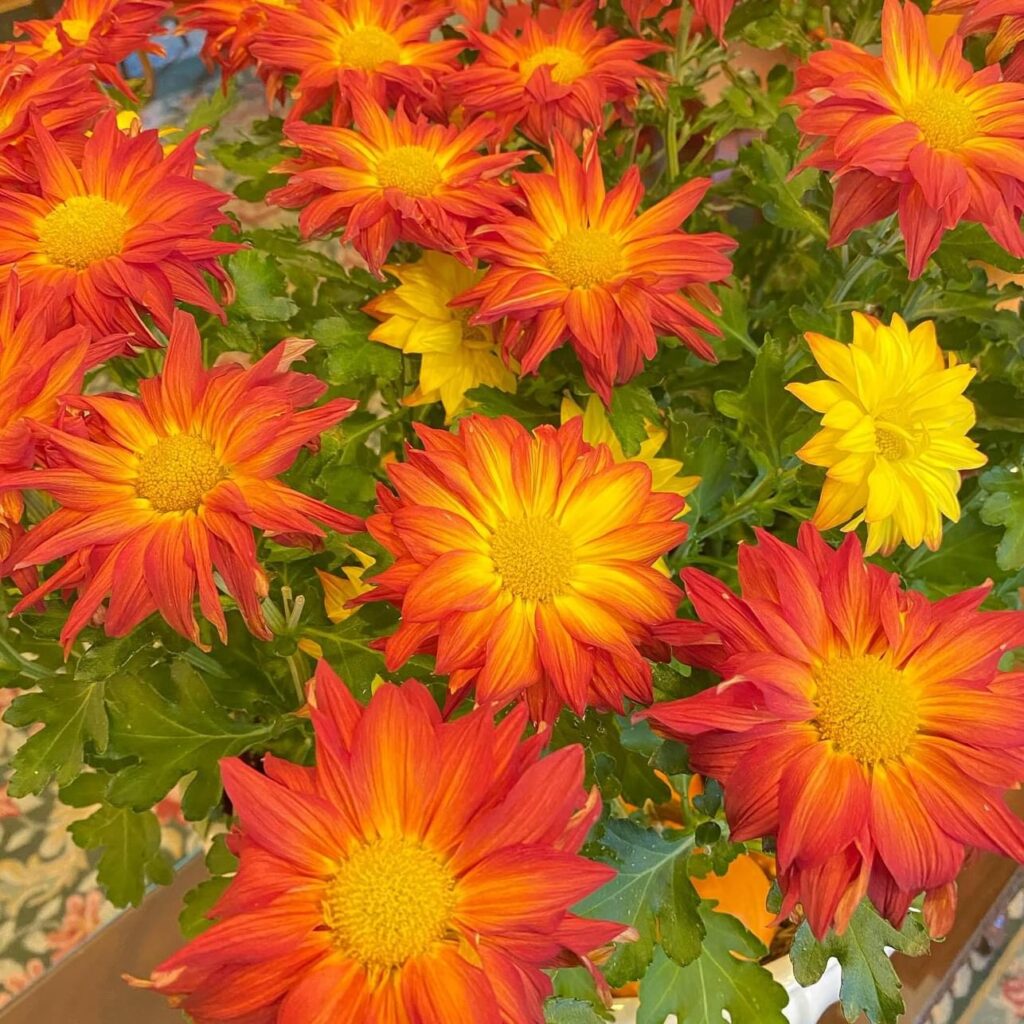
Sunny mums at the Hotel Northampton
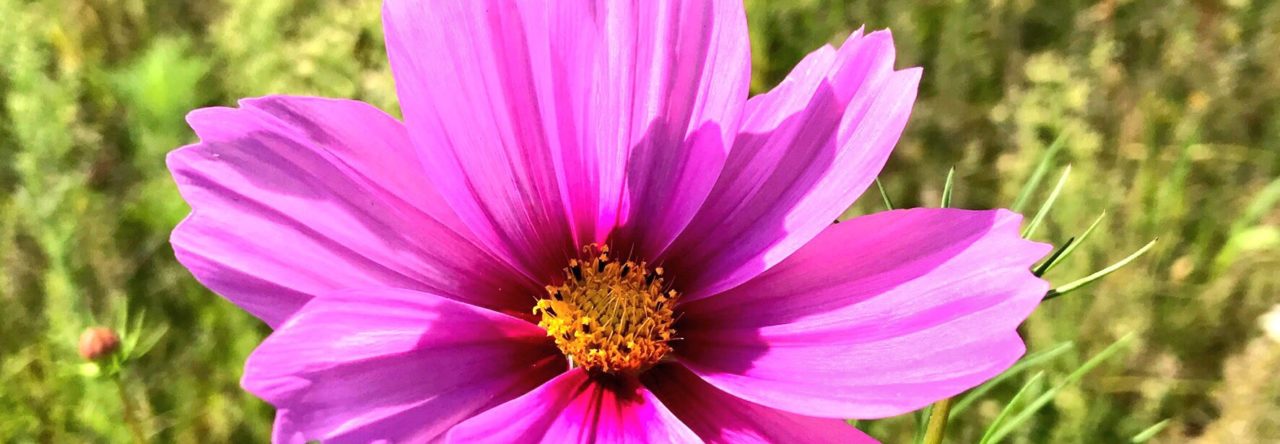
Comments are closed.